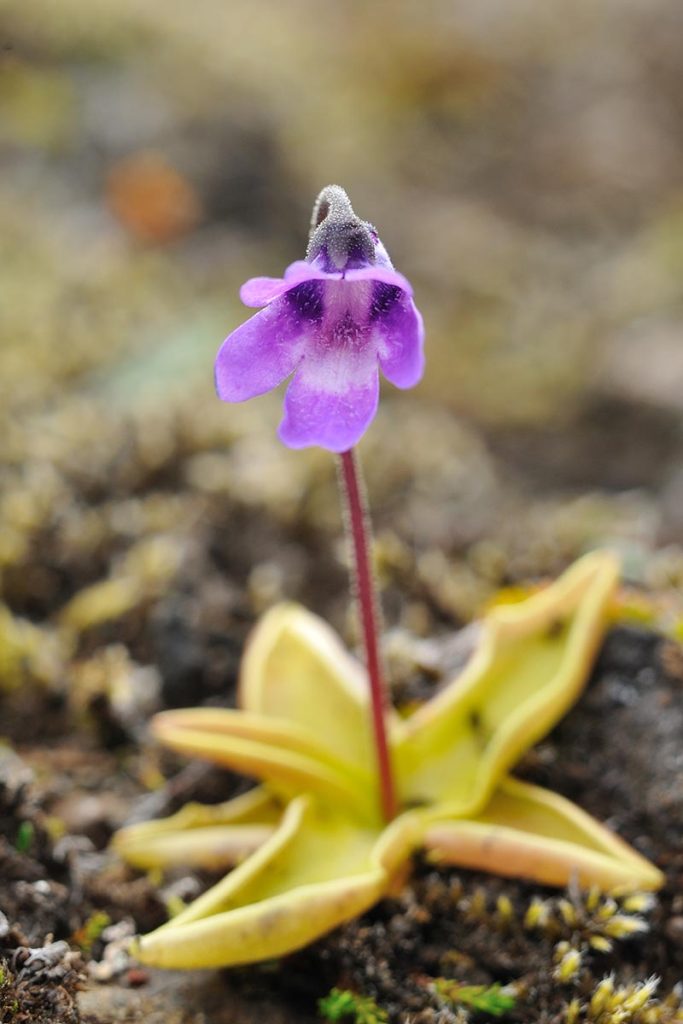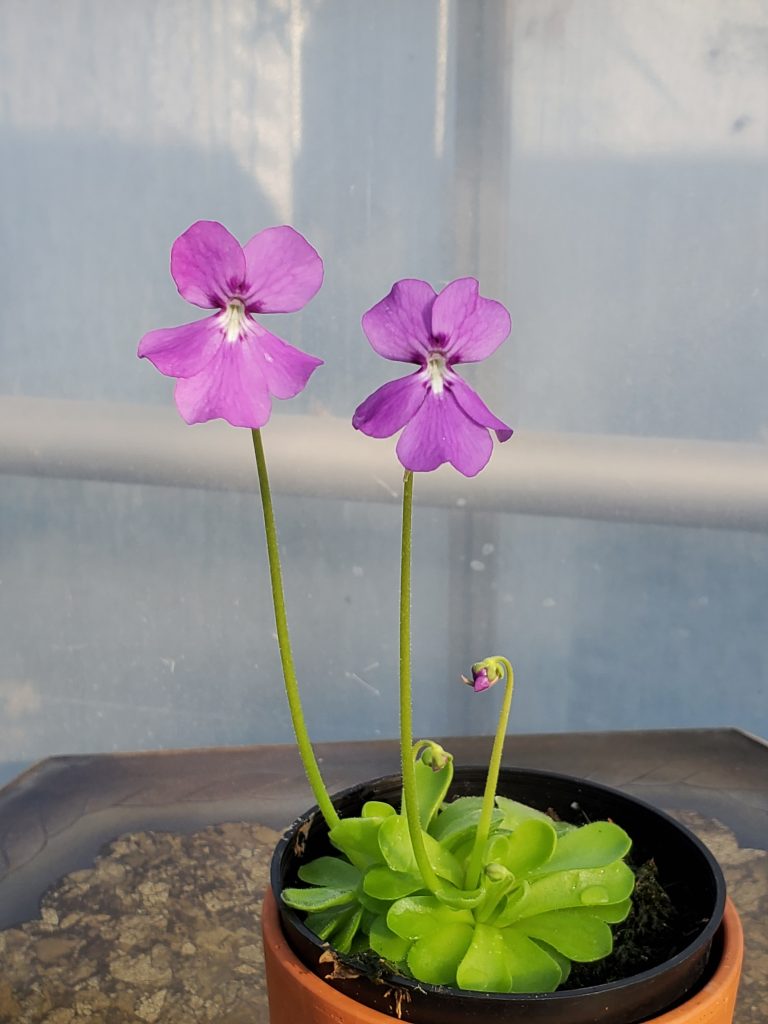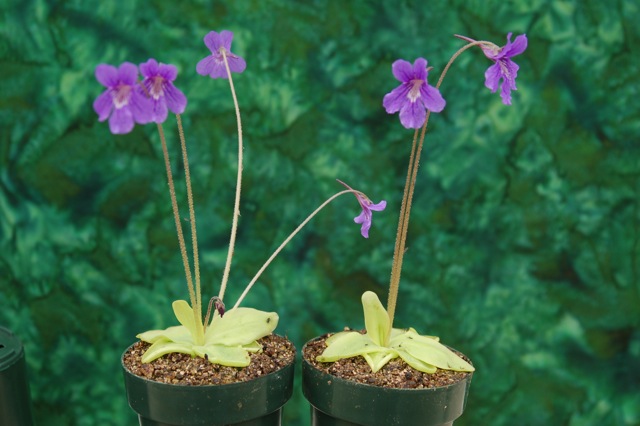Ever wondered what it would be like to have a plant that doubles as a natural pest controller? The butterwort plant, or Pinguicula as it’s known in scientific circles, is that quirky addition to your home or garden that traps insects with its sticky leaves while looking effortlessly charming. These compact carnivores form rosettes of fleshy leaves covered in a glistening mucilage that snares small bugs like gnats and flies, digesting them for nutrients. Native to bogs, mountains, and damp spots across Europe, North America, and Mexico, butterworts have been captivating plant enthusiasts for years.
In 2025, with a surge in interest for sustainable, eco-friendly houseplants, the butterwort plant is gaining traction. Recent discoveries, like the new species Pinguicula tonalaensis found in Mexico, highlight how these plants continue to surprise scientists. They’re not just survivors in nutrient-poor soils; they’re efficient hunters too. A study this year on Pinguicula crenatiloba showed remarkable diversity in prey capture, influenced by environment and morphology. Whether you’re dealing with indoor pests or just want a low-key carnivorous companion, this guide covers everything from basics to advanced care. Let’s dive in and make your butterwort plant thrive.

The Basics of the Butterwort Plant
Butterworts belong to the Lentibulariaceae family, sharing traits with other carnivores like bladderworts. With over 100 species, they range from temperate varieties that endure cold winters to tropical ones that prefer steady warmth. The name “butterwort” comes from their historical use in curdling milk, thanks to enzymes in the leaves.
Biologically, the butterwort plant excels at adaptation. Leaves produce a sticky dew to trap prey, followed by enzymes for digestion. This year, genomic research confirmed multiple whole genome duplications in Pinguicula, aiding their evolution into carnivory. An August 2025 study on European butterworts detailed their evolutionary history, identifying key lineages. For growers, this means understanding types: Temperate species like Pinguicula vulgaris, spotlighted as Scotland’s Plant of the Week in January 2025, go dormant in winter. Mexican butterworts stay active year-round.
These plants are compact, often 2-6 inches across, making them ideal for small spaces. Their flowers—delicate violets, pinks, or whites—add a floral touch, blooming in spring or summer.
Vibrant butterwort plant in full bloom
Popular Butterwort Plant Varieties
Choosing a butterwort plant depends on your climate and setup. Mexican species dominate with vibrant colors, while temperate ones offer hardiness.
Here’s a table comparing top picks:
| Variety | Type | Features | Ideal For |
|---|---|---|---|
| Pinguicula vulgaris | Temperate | Green leaves, purple flowers; hardy to USDA zone 3 | Outdoor bogs, beginners |
| Pinguicula moranensis | Mexican | Color-changing leaves, lavender blooms | Indoor color variety |
| Pinguicula gigantea | Mexican | Large leaves up to 12 inches, sticky traps | Pest control in bigger spaces |
| Pinguicula primuliflora | Temperate | Rosy flowers, compact size | Terrariums |
| Pinguicula zecheri ‘Faulisi’ | Mexican | Ruffled, enormous flowers; recent cultivar | Collectors seeking uniqueness |
New in 2025: Pinguicula tonalaensis, a gypsophyte from Mexico, expands the genus’s diversity. For visuals, Mexican types like P. moranensis shift hues with temperature changes.
Essential Care for Your Butterwort Plant
Caring for a butterwort plant is straightforward if you mimic their natural habitats. Focus on light, water, soil, and temperature.

Light Requirements
Bright, indirect light is key—3-4 hours of morning sun or LED grow lights at 14 hours daily. Too little causes legginess; too much burns leaves. In 2025 care guides, experts recommend full-spectrum LEDs for consistent growth.
Watering Tips
Use distilled or rainwater only; minerals in tap water harm roots. Employ the tray method: Keep 1/2 inch of water in a saucer. Temperate butterworts need drier winters, while Mexicans stay moist. October 2025 updates emphasize bottom-watering to avoid rot.
Soil and Potting
A mix of peat, perlite, and sand ensures drainage and acidity (pH 5.5-6.5). Repot annually in spring. Recent tips suggest adding lava rock for better aeration.
Feeding and Nutrients
Butterworts feed themselves on insects. No fertilizers needed, but dilute carnivorous formulas sparingly if bugs are scarce.
Temperature and Humidity
65-80°F days, 50-65°F nights suit most. Temperate types require winter dormancy below 50°F. Humidity at 40-60%; mist if dry.
Follow these, and your butterwort plant will flourish, catching pests effortlessly.
Propagating Butterwort Plants

Propagation is simple and rewarding. For Mexican butterworts, pull a leaf and place it on moist media—roots form in weeks. Temperate types work via seeds or divisions. A 2025 trend: Using tissue culture for disease-free clones.
- Select healthy leaves post-bloom.
- Use a humid propagation dome.
- Expect babies in 1-2 months.
This method can triple your collection quickly.
Common Issues and Solutions
Yellow leaves? Overwatering—let dry out. Pests like aphids? Rinse with water. Browning might stem from uneven moisture, as noted in recent studies. Root rot requires trimming and repotting.
For tiny species like P. crenatiloba, monitor prey intake, a August 2025 report showed environmental impacts on hunting efficiency.
Butterwort Plants in Terrariums
Terrariums amplify the butterwort plant’s appeal. Compact varieties fit glass enclosures, controlling humidity. 2025 kits with LEDs make setup easy. Pair with moss for a mini-bog.
Final Thoughts on the Butterwort Plant
The butterwort plant offers a blend of beauty, utility, and science. With 2025 bringing new species and insights, it’s an exciting time to grow them. Start small, observe, and enjoy the sticky spectacle.
FAQs About Butterwort Plants
Tray method with pure water; keep moist but not soggy.
Temperate, yes, tropical no.
Bright indirect or partial sun.
It handles bugs; supplements are rarely.
Yes, non-toxic.